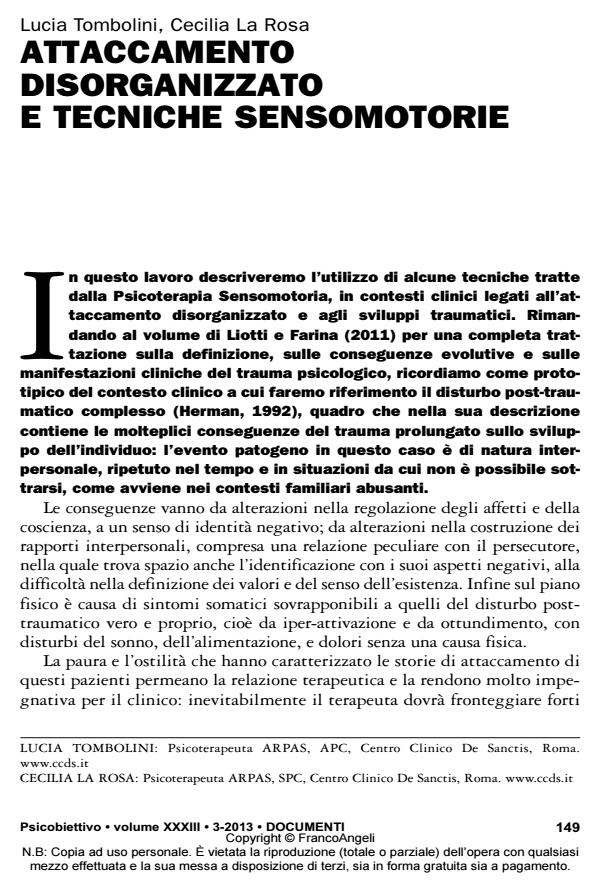Disorganized attachment and sensorymotor techniques
Journal title PSICOBIETTIVO
Author/s Lucia Tombolini, Cecilia La Rosa
Publishing Year 2014 Issue 2013/3
Language Italian Pages 15 P. 149-163 File size 135 KB
DOI 10.3280/PSOB2013-003010
DOI is like a bar code for intellectual property: to have more infomation
click here
Below, you can see the article first page
If you want to buy this article in PDF format, you can do it, following the instructions to buy download credits

FrancoAngeli is member of Publishers International Linking Association, Inc (PILA), a not-for-profit association which run the CrossRef service enabling links to and from online scholarly content.
Treating trauma and related symptoms need to be focused on the therapeutic relationship and on how to cope with the trauma memories. About the therapeutic relationship the emotions and their regulation will have a very important role. To cope with trauma memories therapist has to be expert and use it in a late step of the therapy after a good relationship has set up and looking to patient metacognition ability. The authors explain the Sensorimotor Psychotherapy procedure and try to describe a possible integration in Cognitive Evolutionistic Psychotherapy.
Keywords: Thrauma; Disorganized Attachment; Sensorimotor Psychotherapy; Defense System; Therapeutic Relationship.
Lucia Tombolini, Cecilia La Rosa, Attaccamento disorganizzato e tecniche sensomotorie in "PSICOBIETTIVO" 3/2013, pp 149-163, DOI: 10.3280/PSOB2013-003010